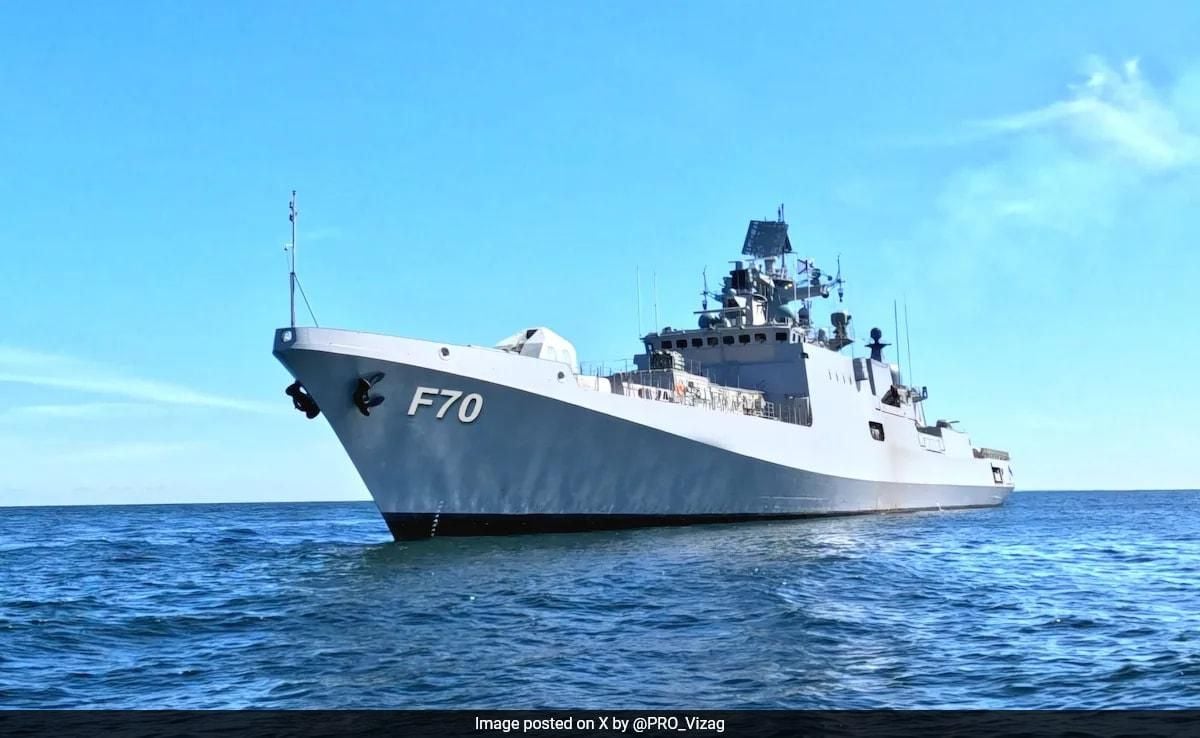On December 9, 2024, a major milestone was achieved for the Indian Navy with the commissioning of the INS Tushil (F 70) at the Yantar Shipyard in Kaliningrad, Russia. The event was attended by India’s Defence Minister Rajnath Singh, who emphasized that this commissioning not only reinforces India’s advancing maritime strength but also symbolizes the deepening ties between India and Russia.
During his address, Defence Minister Singh highlighted the strengthened maritime collaboration between the two nations, rooted in mutual trust and shared values. He pointed out the significant increase in local content within Indian naval vessels, with INS Tushil serving as a prime example of successful cooperation between Indian and Russian defense industries. “Make-in-India content is continuously increasing across our naval assets,” Singh noted, underscoring the ongoing transformation towards technological self-sufficiency under the ‘Aatmanirbhar Bharat’ initiative.
INS Tushil is classified as a multi-role stealth-guided missile frigate and is the seventh vessel constructed under the Project 1135.6 class, joining six other frigates in the Indian Navy. The ship’s name, meaning “protector shield” in Hindi, reflects its intended role in safeguarding maritime interests. Singh reiterated India’s commitment to maritime security, citing the Navy’s successful operations against piracy and arms trafficking across crucial maritime corridors, ensuring the safety of international trade.
The new frigate is equipped to operate across four warfare dimensions: air, surface, underwater, and electromagnetic, armed with sophisticated weaponry, including BrahMos missiles and advanced electronic warfare systems. This enhancement is crucial in the context of rising naval activities in the region, contributing to India’s broader defense strategy.
Admiral Dinesh K Tripathi, Chief of the Naval Staff, expressed pride in the collaboration between the Indian and Russian teams, emphasizing the successful integration of numerous systems aboard the vessel. The commissioning of INS Tushil stands as a testament to the productive partnership developed between the two navies over the years, bolstered by joint ventures and exchanges.
During the ceremony, Singh outlined India’s long-term naval strategy under the banner of Security and Growth for All in the Region (SAGAR), which aims at fostering peace and collaboration in the Indian Ocean Region (IOR). He highlighted the increasing interdependence among allied nations in pursuit of collective security and regional stability.
Looking ahead, Singh conveyed optimism regarding future collaborations between India and Russia, focusing on fields such as artificial intelligence, cybersecurity, and counter-terrorism. He asserted that both countries are poised to strengthen strategic alliances that promote mutual growth.
Notably, INS Tushil’s construction included a substantial 26% indigenous content, showcasing significant progress from previous projects. Leading Indian firms, including Bharat Electronics Limited, BrahMos Aerospace, and Nova Integrated Systems, invested in the vessel’s development, underscoring the importance of domestic capabilities.
Despite challenges such as the COVID-19 pandemic and geopolitical tensions affecting supply chains, particularly due to the ongoing conflict in Ukraine, INS Tushil is now ready for active service. The commissioning ceremony also featured prominent Russian dignitaries, including Deputy Minister of Defence Alexander Vasilyevich Fomin, reflecting the significance of this naval asset under the current global strategic context.
Experts suggest that the addition of INS Tushil will enhance India’s maritime security framework, enabling the nation to tackle emerging challenges and affirm its presence in the Indian Ocean. The frigate is set to serve not only as a tactical asset but also as a symbol of India’s aspirations to bolster its maritime prowess.
Admiral Tripathi shared the Navy’s ambitious plans, stating, “We aim to commission one vessel every month for the upcoming year,” which would ensure enhanced operational readiness and deterrence capabilities. The ongoing initiatives target the construction of 66 different ships, both domestically and internationally, aligning with the Navy’s goal to grow its fleet strength to between 155 to 160 warships by 2030.
The commissioning of INS Tushil represents more than just the addition of another ship to India’s naval fleet; it marks a strategic move within the maritime domain, enhancing India’s capacity to respond to threats and maintain security in its waters.












